The amount of space you need will depend on the kind of lifting you plan on doing or what kind of equipment you prefer.
Here are a few possibilities of what you can do with some small square footage…
Table of Contents
With a Power Rack and Bench Setup
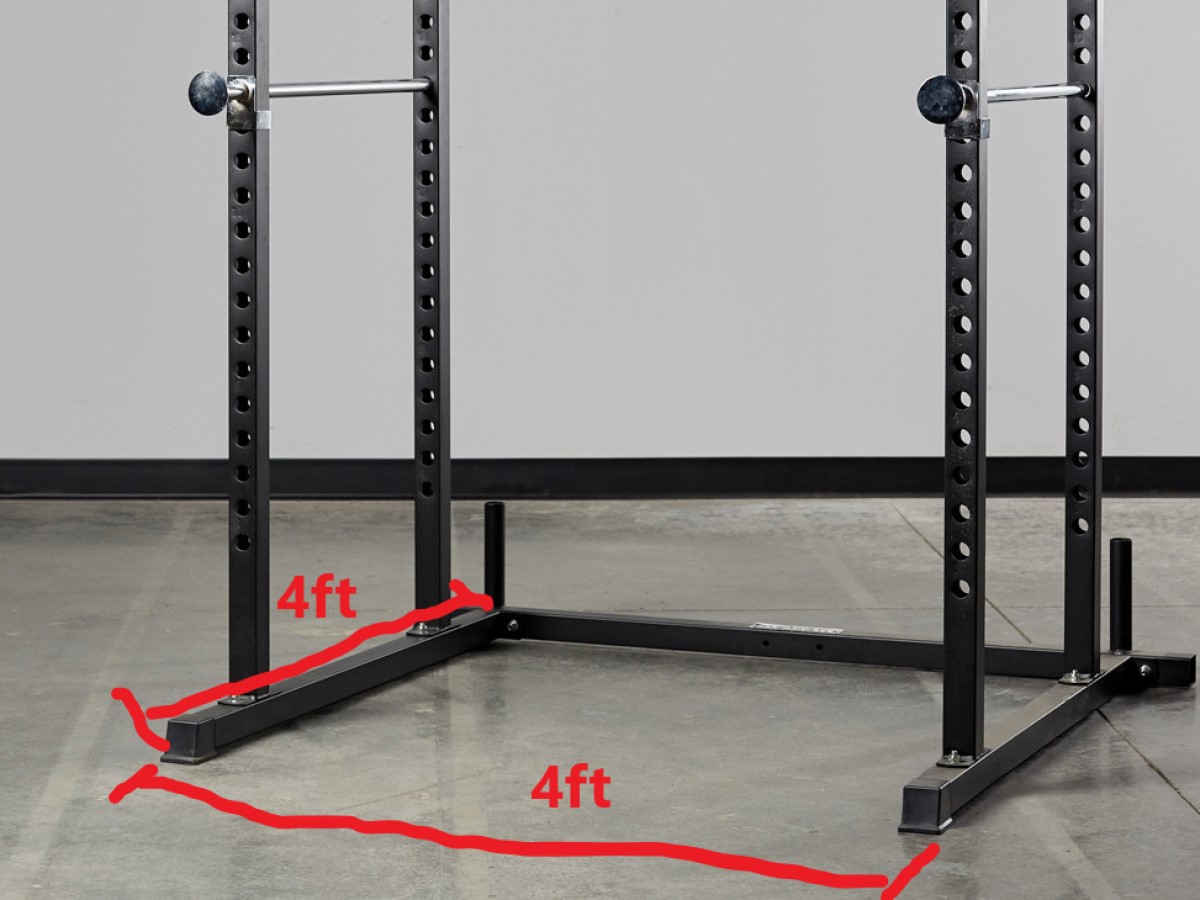
Width
A power rack is about 4ft wide, or it is if you only measure the uprights. It might be wider overall if it has something extending out like large feet or plate storage pegs.
The 4ft figure is pretty universal, because an olympic barbell is around 51-52″ long between the collars to fit over it with some room for slop.
The overall length of a typical barbell is 7ft long, and it will need a free range of movement, and you’ll need room to load the plates on it.
In addition, will you have a bench that you will slide in for bench pressing?
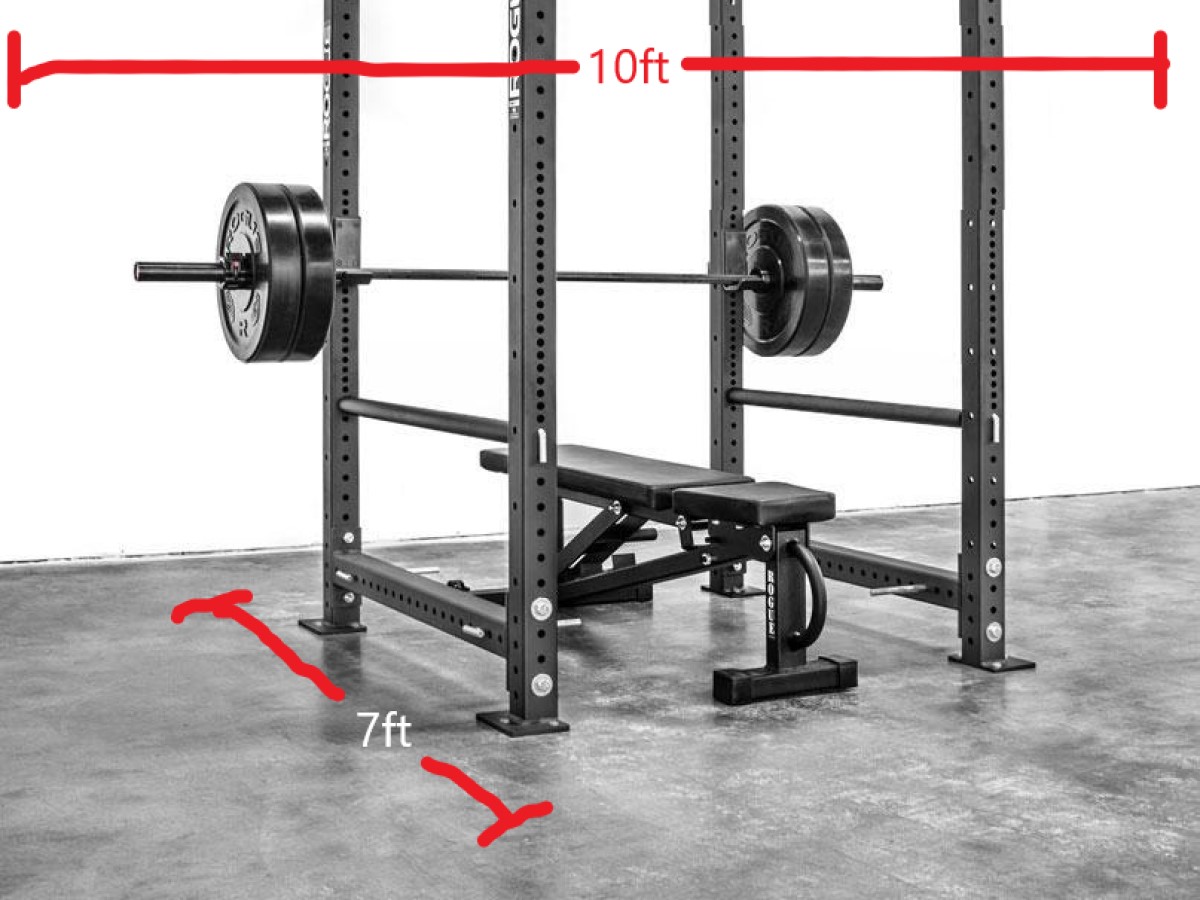
To give yourself extra room to stand on either side and load the 7ft bar, 10ft of space is best. That only gives you 16″ of space on either side to stand. A little less can work in a pinch. It’s going to be awkward loading 45lb plates on without enough room to stand comfortably on either end of the bar to load weights.
Another way to mitigate the situation is with a special 6ft bar that is made with the same inside length as a 7ft bar and with sleeves 6″ shorter on each side. Take care not to get a women’s olympic lifting bar that has the same shaft and sleeve length as that but with a thinner 25mm shaft that most male users won’t like.
Depth
As far as the depth of the area from front to back, you will ideally want enough room to slide your bench in and out. Add together the length of your bench (4-5ft) plus the depth of your rack (4-6ft) and the overall space you need is anywhere from 8-11ft. You can do it with less, if you can slide or roll your bench out at an angle.
Flat benches will be closer to 4ft long, because there isn’t as much to them. Adjustable benches might be closer to 5ft long, because they sometimes have space for leg or preacher attachments.
Some basic power racks are only 4ft (48″) deep. The ever-popular Rogue R-3 floor-bolted rack is only 34″ deep.
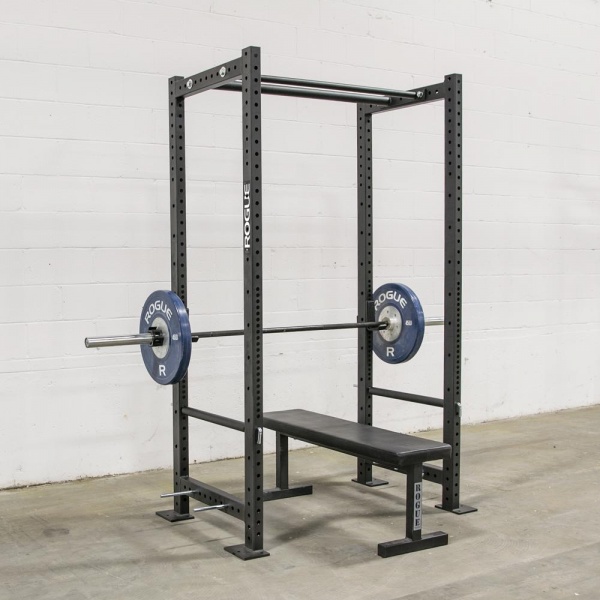
Extra space in front of the rack will be useful also for things like deadlifts, cleans and overhead presses, some or all of which you won’t be able to do inside your rack.
Cleans are such a dynamic movement that will have a varying range of motion if your form isn’t perfect, and it isn’t smart to do them inside anything but a deep rack, at the risk of hitting the uprights or bar catches.
Deadlifts are nice to do outside the rack too. Deadlifts can be done inside some racks by removing the safety bars. Other racks have safety bars that can only slide up and down, so you can’t get them low enough for your plates to touch the floor, but you should be able to slide the safety bars really high out of the way instead and slip the bar underneath.
Height
Overhead presses can be done inside some commercial racks that are very tall, but most home and light commercial racks are only about 7ft tall, to fit under 8ft ceilings with room to spare, meaning an average height male will likely bang against the bar against the top crossmembers, if not hit the plates on the ceiling. It depends on how tall you are and how many inches of added flooring, such as plywood and rubber, you have under your workout area.
Weight Plate Storage
Don’t forget about where you’ll be storing your weight plates. If your power rack doesn’t come with plate storage pegs, you need a separate weight tree and enough room around it to pull off plates. You can’t just set the plate tree right next to your power rack either, or it will be in the way of the range of motion of the barbell.
So all that being said, just for a basic power rack and a flat or adjustable bench to use in it, you want at least a 10ft x 7ft area.
With a Squat Stand and Bench
A full-sized half rack (also called a squat stand), sort of like a power rack with the front side open, doesn’t really save on floor space. It needs the same footprint as a power rack for stability.
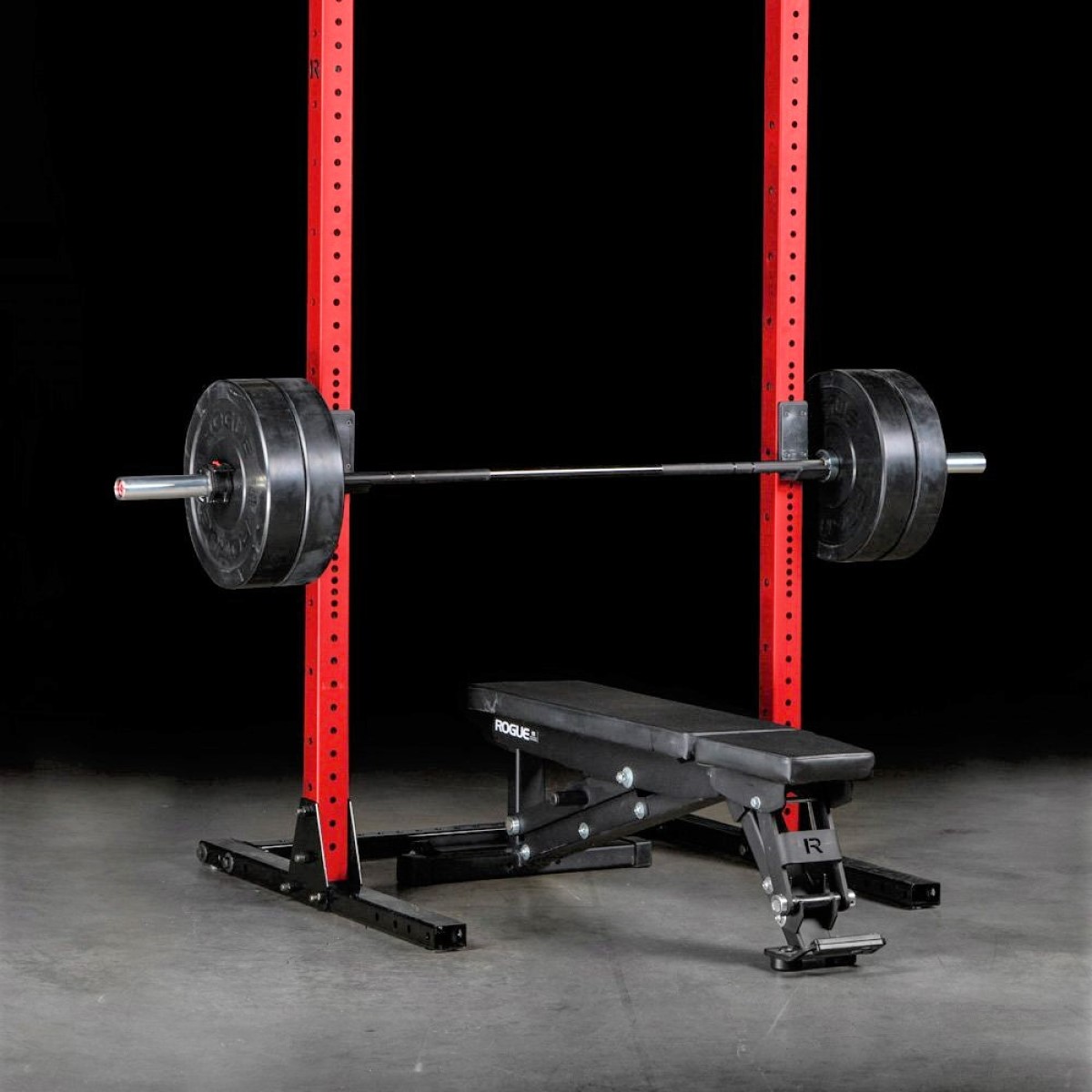
It could work better for you when your area is tight and you need to maneuver around it, stepping over the feet, and you can push the rear of the rack all the way up against the wall and still have room to work because of the way the uprights are closer to the center, unlike a power rack that may need to be pulled away from the wall by 12″ or so to give you room to work. So while the footprint itself is about the same, functionally it could work better.
There are also options for a smaller, but less safe, squat rack.
See this example.
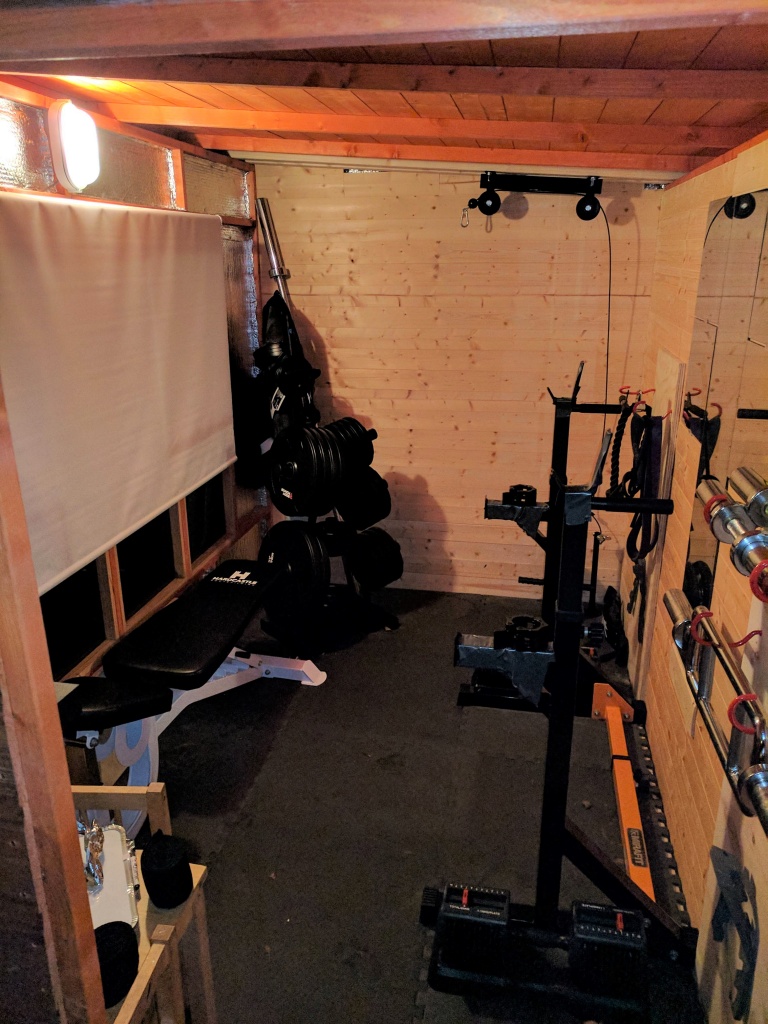
He managed to fit a squat stand, bench and weights in a 10’x5′ area.
When you’re THAT constrained on space, it very well might make a difference if you can get a small-footprint squat rack, like this one on Amazon that is only 26″ deep and similar to the one in the above pic:
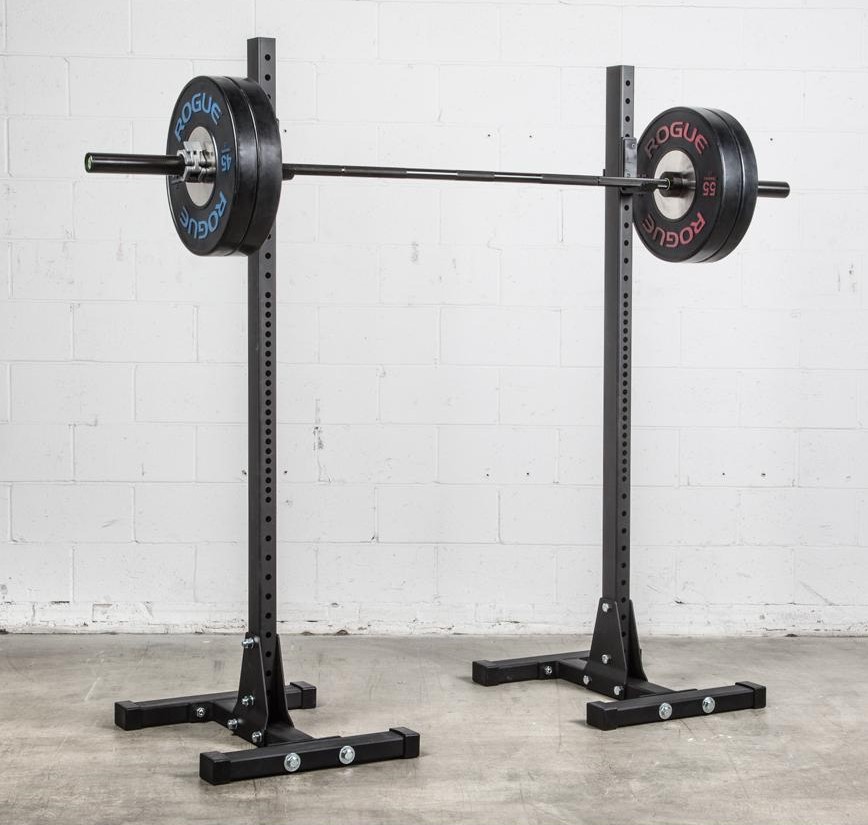
You can use portable squat stands if you absolutely have to move them away to make space for other exercises, but if at all possible I recommend something like the above pic because it’s always going to be more stable and you don’t have to worry about lining them up just right and setting them the right distance apart.
Wall Mounted Squat Rack
This is a cool type of squat rack that started coming into wide use a few years ago.
The main feature is they fold up against the wall when not in use, taking up mere inches of floor space.
When you fold it out, it has only a top bracing (or pull up bar) holding the two sides together. Pop the pins and remove the pull up bar to fold the sides of the rack in.
So the real trick with wall mounted racks is to install them carefully. You need the feet barely touching the floor or hanging a millimeter above it, so that the load is transferred to the floor instead of to your wall when you put weight on it. Likewise, you don’t want to install them such that the feet drag too hard on the floor as you try to fold the sides in.
Rogue makes one that sticks out 21.5″ or 41.5″ from the wall. Obviously for our purposes here I’d recommend the 21.5″ to save space.
We did a full comparison of these kinds of folding racks.
Dumbbell Bench
Dumbbell work on a bench will ideally require at least a 6ft x 7ft area. You’ll want plenty of room to spread your arms. A bench may be only 4ft long, but the 7ft area is suggested because you will have dumbbells sitting on the floor in front of your bench that you need to lean over and pick up. And of course, you’ll need space to your dumbbells somewhere out of the way.
You may also be able to manage with enough space doing dumbbell work with your bench slid part way into your power rack if that’s the only thing your space allows.
Olympic Lifts
If you’re doing the snatch or clean-and-jerk, an 8ft x 6ft working area is needed, plus a little extra room (beyond 8ft) to the sides just in case you drop the bar more than 6″ off-center or work your way to one side during a high-rep set. Note that this is a little narrower than the minimum 10ft space I recommended above for a power rack setup, just because with the barbell on the floor you can roll plates to the end of the bar while you straddle the shaft.
Lifting platforms made for olympic lifts are 8ft wide. Platforms are made 6ft or 8ft deep, so again that will be the minimum length. 8ft really is nice so you have room to drop the bar behind you as well, which often happens with a failed snatch. A few extra feet behind you beyond that will also help prevent injury when you have to push a failed lift forward, away from your body, as you fall backward out of the way.
As far as room height, it’s close to be pretty close with an 8ft ceiling if you’re 6ft tall. Bumper plates will stick out about 8″ beyond the bar, so you might be able to guesstimate whether you’re going to be marking up your ceiling by holding a tape measure in your hand and reaching up. A snatch will require slightly less height because your grip is wider, while a thruster (a front squat, push press, and back to front squat position, usually done in high reps) will require slightly more height because it’s done with a lighter weight that you can repeatedly throw up to the limits of your reach.
See what coach Grant Broggi has his small garage gym set up for his clients.
He says it’s 11ft wide, but it looks narrower than that to me.
Anyway, he has a couple nice portable squat stands he brings outside for doing overhead presses. That works well for him. In your home garage, your concrete floor is most likely sloped, maybe even worse than your driveway, and using squat stands like that are not safe on anything but a flat surface.

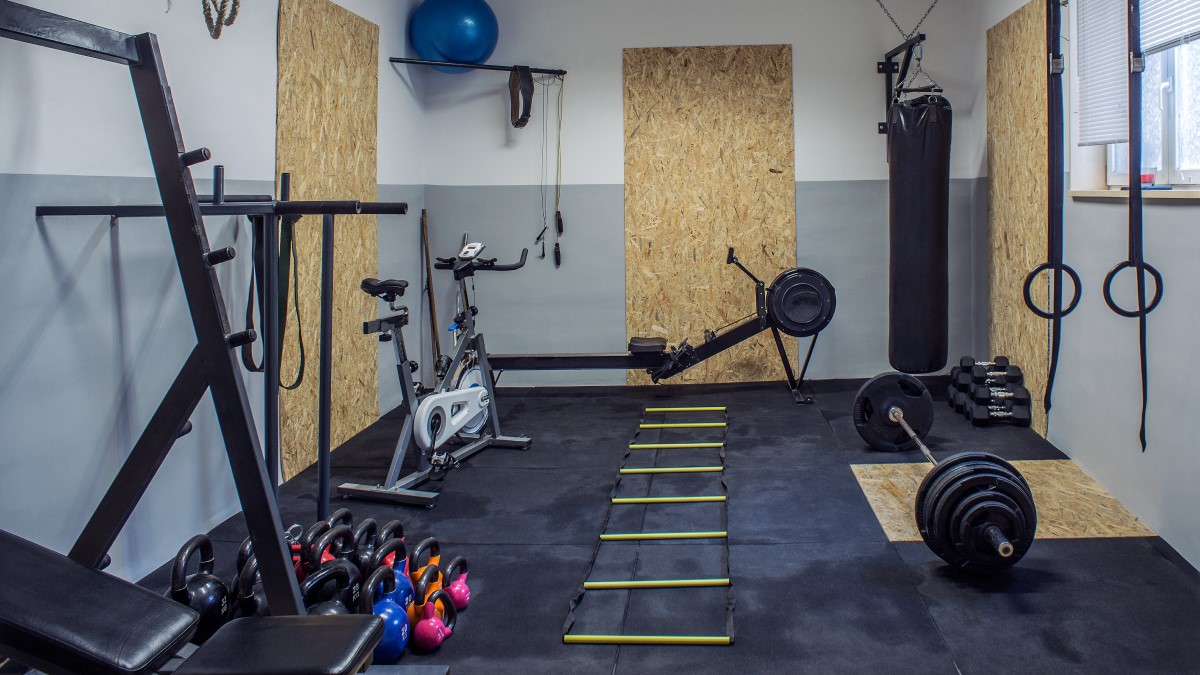
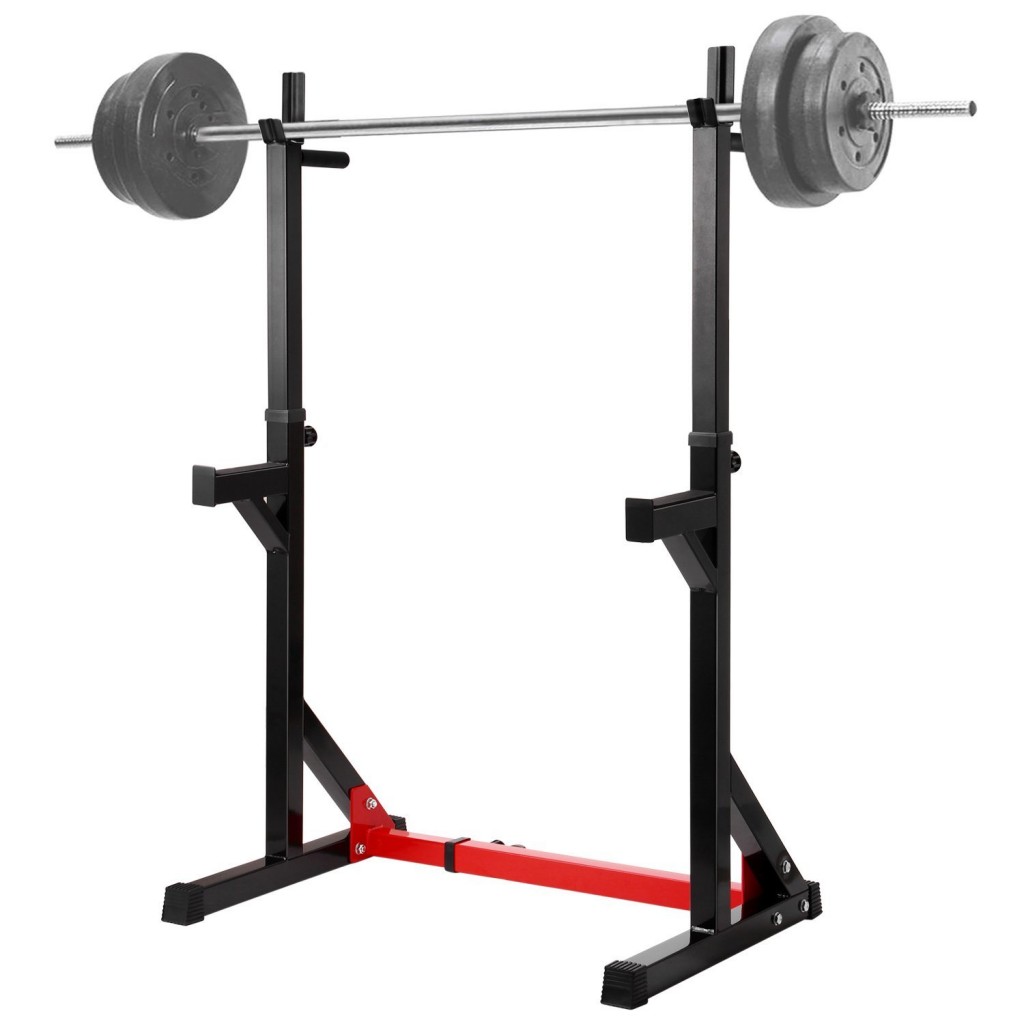
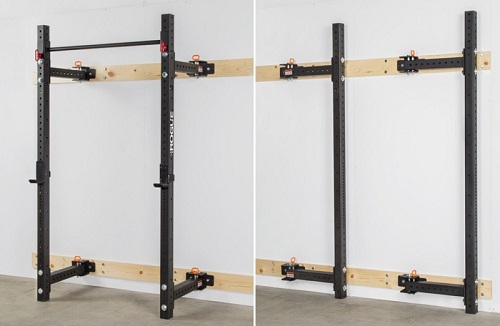
Who the hell manufactured that portable squat rack with the red and blue rogue bumpers? You have to turn the feet the other way so you don’t trip all over yourself backing out of the rack!! hahaha
I’m with you. It’s a scary design. Too many things that could go wrong.
A good option for saving space is to put the plate trees on wheels, then keep them within the footprint of the rack. wooden moving dollies work well for this, & they cost very little. + you can store extra bars on the rack, high up & out of the way.
Good idea! I saw a friend recently install a wooden dolly underneath a gas grill.